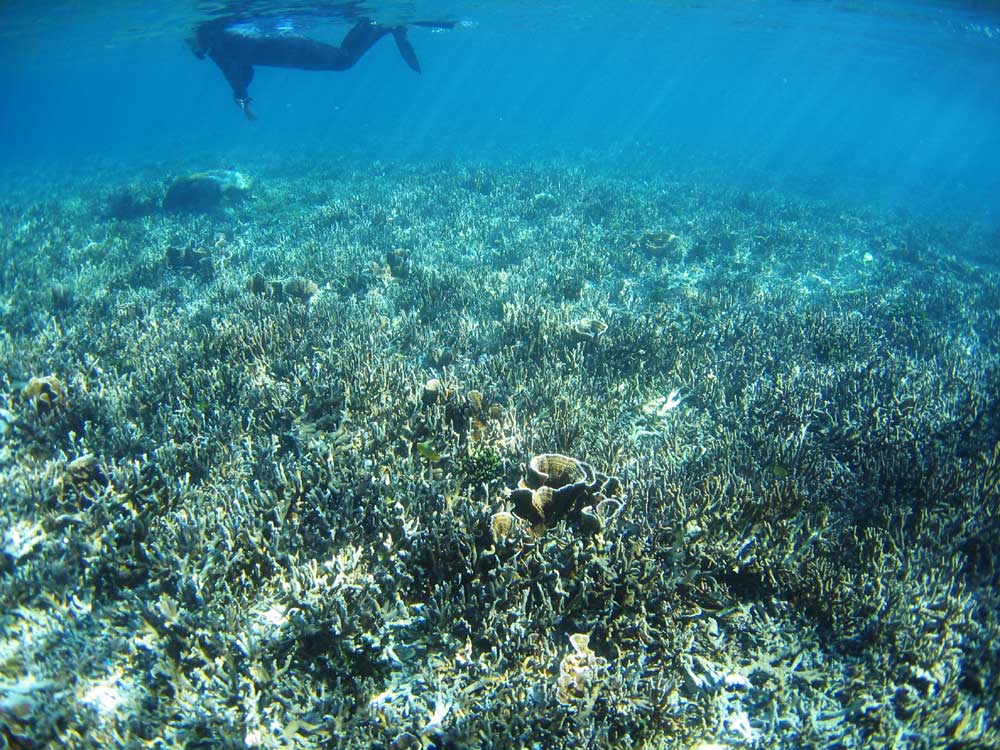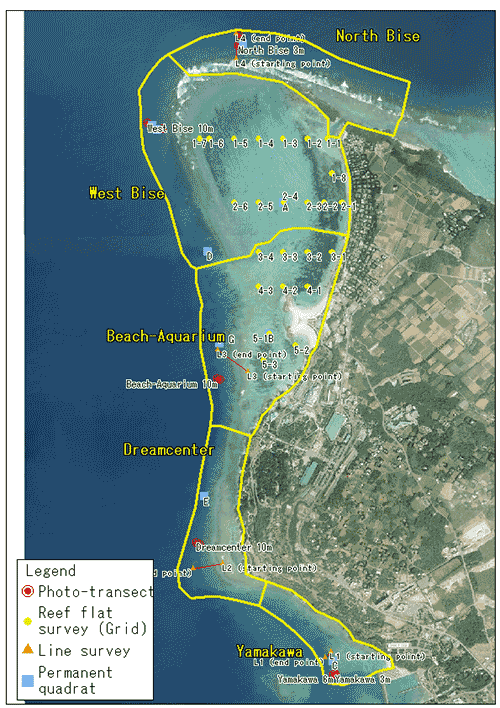Coral Reef Monitoring Program at Okinawa Churashima Foundation

World's coral reefs are being degraded by many stresses arising from human activities and natural threats such as global warming. Okinawa's coral reefs are not the exception. Recent years, coral communities in Okinawa main island as well as Kerama and Yaeyama islands were declined to the unprecedented levels. Okinawa's reefs have delivered important ecological services to fisheries and tourism. They have also been the basis of regional biodiversity. The loss of coral reefs would have significant ecological, economic, social and cultural impacts on local people and societies. Inheriting valuable coral reefs to the next generation is the prime task for our generation.
Okinawa Churashima Research Center's coral reef monitoring program, commenced in 2006 with internationally standardized protocols, aims to collect baseline data on coral communities near Ocean Expo Park. By analyzing the data, we intend to answer to the questions: Are corals {or the reefs} healthy? Are they changing? What can we do to protect them?
Bise coral reef from a birds-eye view
Outline of Coral Reef Monitoring Program
The survey area of our monitoring program, enclosed by yellow line in the aerial photo shown below, is set to cover the major coral reef habitats between Cape Bise and Yamakawa Port. The area consists of two distinct habitats, the outer reef slope and the inner reef flats, that are separated by the intertidal reef crests. We conducted preliminary survey in 2004 and 2005 and found that the survey area can be divided into five sites according to geomorphological feature and the characteristic of coral communities. These sites are: North Bise, West Bise, Beach-Aquarium, Dream Center and Yamakawa. For the purpose of comparing the inhabitation status of corals and associated benthic fauna and flora, we employed various survey methods, i.e. Manta-tow, Photo-transect, Permanent-quadrat, Vertical transect line and Benthos swim count.














